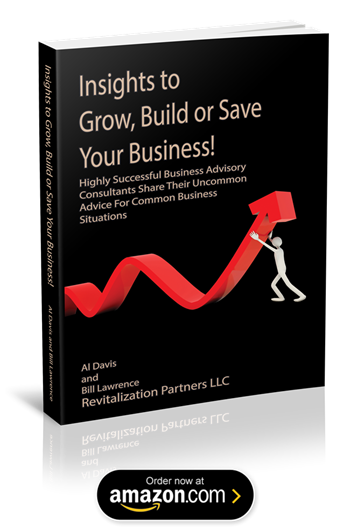 America has a corporate debt restructuring problem, but it isn’t what you think. Yes, the federal debt is growing and many Americans are still struggling to pay off mortgages and student loans. But the larger problem is only discussed in financial circles.
America has a corporate debt restructuring problem, but it isn’t what you think. Yes, the federal debt is growing and many Americans are still struggling to pay off mortgages and student loans. But the larger problem is only discussed in financial circles.
Like consumers, the richest one percent of companies have enough cash to pay off their debt. But for the rest, corporate cash only represents fifteen percent of what they owe; a ten-year corporate low.
But wait: The cost of corporate debt is at an all-time low and big US companies have been very conservative with their finances. They’ve collectively hoarded hundreds of billions of dollars in cash, instead of spending it on wage increases, hiring or expanding their operations.
The reality is much different and more concerning. Much of the cash is held by just a few companies, while is debt is ballooning at other, weaker companies, while investors, desperate for larger returns, rush in to lend to them. If interest rates rise and/or the economy falters, these investors could face losses, perhaps steep along with the changes.
A MISCONCEPTION EXISTS …
 The broader economy is affected as companies with more debt have to cut back further and lay off more when a downturn hits. “There is a misconception that companies are swimming in cash” says Andrew Chang, a director at S&P Global Ratings. “Actually, they’re downing in debt.”
The broader economy is affected as companies with more debt have to cut back further and lay off more when a downturn hits. “There is a misconception that companies are swimming in cash” says Andrew Chang, a director at S&P Global Ratings. “Actually, they’re downing in debt.”
It turns out, just like people, companies have a wealth gap. Of the $1.8 trillion in cash siting in US corporate accounts, half belongs to just 25 of the 2000 companies tracked by S&P Global Ratings.
Outside of Apple, Microsoft, Google and the rest of the corporate one percent, cash has been falling over the last two years as debt has been rising. It now covers $15 of every $100 they owe. Less than during the financial crisis of 2008.
The number of companies that have defaulted on debt this year has already passed all of 2015, which was itself the most since the financial crisis. Of public companies that appear to be quality debtors, many are so stretched they are only a quarter or so of being rated “junk.” Companies whose debt is already rated “junk” are in the worst shape. To pay back all that they ow, they would have to set aside every dollar of operating earnings for the next 8.5 years. Longer than in the height of the financial crisis.
HOW MUCH DEBT …
 You shouldn’t borrow what you can’t pay back; that’s how we got into this economic mess in the first place. But figuring out how much debt you can take on or what a reasonable lender will lend is a bit tricky.
You shouldn’t borrow what you can’t pay back; that’s how we got into this economic mess in the first place. But figuring out how much debt you can take on or what a reasonable lender will lend is a bit tricky.
There are several metrics that will help keep you honest about how much debt you can take on.
1.Projected operating income / Interest expense. Called the interest-coverage ratio, it tells lenders whether or not you can cover your interest payments. (They may have a little leeway on principal, at least in the early periods.) If you can’t pay interest, the bank regulators can ask the bank to increase their reserves or write off the loan. Both are bad.
“Operating income” is revenue less all expenses except interest and taxes. If you could perfectly predict the future, an acceptable ratio would be 1.0. But lenders are skeptical and want some cushion. Assume the ratio should be more like 1.2 to 1.5.
2. Projected net income + Depreciation / Principal payment. Maybe you can keep the game going by covering your interest payments, but not have a prayer of paying back the principal. This ratio will smoke you out. It uses in the numerator the free cash available to the enterprise, after all expenses. Like the interest-coverage ratio, target 1.2 to 1.5. If this ratio is less than 1.0 in the early months, banks may be willing to adjust your principal payment schedule, so long as the other aspects of your company look sound. Need capital to fund growth? Tough luck: Pull it out of equity.
3. Projected EBITDA + Lease payments / Interest + Lease payments + Principal / 1-tax rate. While it looks scary, this ratio is meant to provide comfort. It combines the above two ratios, but gives lessors (landlords and equipment-rental firms) an extra level of clarity and safety by explicitly highlighting the impact of all lease payments. (In the first two ratios, lease payments are pulled out of the numerators.)
In this ratio, EBITDA stands for “earnings before interest, taxes, depreciation and amortization”-the basic operating income of the company before non-cash expenses. Principal is adjusted to a pre-tax basis. New companies should shoot for a ratio of 1.25; established ones, 1.1.
HIGHER RATES …
 If the market gets concerned, it will start demanding significantly higher interest rates.
If the market gets concerned, it will start demanding significantly higher interest rates.
Of course, lenders can get things horribly wrong. They didn’t catch the least debt bubble pouring money into bonds and mortgages despite signs that homeowners couldn’t afford them.
And like the last crisis, the problem may not end there.
Many companies have “rolled over” their old ones, taking on new loans with more debt.
And as long as interest rates are very low, that may work. But when things start to fall apart due to a weak economy and/or higher interest rates, things fall apart very quickly.
Revitalization Partners is a Northwest business advisory and restructuring management firm with a demonstrated track record of achieving the best possible outcomes for our clients. We specialize in improving the operational and financial results of companies and providing hands-on expertise in virtually every circumstance, with a focus on small and mid-market organizations. Whether your requirement is Interim Management, a Business Assessment, Revitalization and Reengineering or Receivership/Bankruptcy Support, we focus on giving you the best resolution in the fastest time with the highest possible return.



